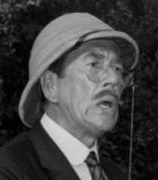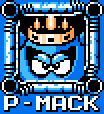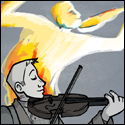|
KYOON GRIFFEY JR posted:[citation needed] Holy poo poo how did I miss that nuclear hot take. If America wanted to deal with, at least, Bolshevik Germany and France going forward then sure, stay out of the war. The other point, 'how about Congress not tell Wilson to get stuffed and instead join the League of Nations like it was supposed to'...ehhh maybe. Would it have made any real difference over say Abyssinia? I doubt it tbh. feedmegin fucked around with this message at 19:50 on Sep 27, 2018 |
|
|
|

|
| # ? May 27, 2024 17:00 |
|
Yeah, if the US had not been involved militarily but still armed and funded the allies the outcome is probably the same, except with another year of warfare at least with all that entails. If you're arguing that the US not assisting the allies at all (i.e. selling arms and financing the war effort) would have helped the post-war situation, then maybe, but we're deep into Gay Black Wilson territory here.
|
|
|
|
MikeCrotch posted:Yeah, if the US had not been involved militarily but still armed and funded the allies the outcome is probably the same, except with another year of warfare at least with all that entails. I don't think the result would have led to the same result in the end if the US had just been supplying the allies. My understanding of the spring offensive was that it was a last desperate push to break the Allies before all those fresh soldiers from the US started to bolster the forces already in France. So without that fear it is hard to say how the Germans would have changed any eventual push they would try but it does seem as though it would more likely end up with a ceasefire then actual victory. In terms of the US not getting involved at all, that was the point I was trying to make but as you said that is very much an alternative history idea that it would be hard to figure out just what would have come from such a decision.
|
|
|
|
OTOH, if the US hadn't gotten involved, the Spanish Flu wouldn't have been nearly as bad.
|
|
|
|
13th KRRC War Diary, 27th September 1918 posted:The major portion of the day was given up to a Battalion tactical exercise the final objective being in the ourskirts of ACHIET LE GRAND. In addition Rifle Grenade firing, bombing and Lewis Gun firing were carried out. The afternoon was devoted to physical training and bayonet fighting.
|
|
|
|
Hunt11 posted:I don't think the result would have led to the same result in the end if the US had just been supplying the allies. My understanding of the spring offensive was that it was a last desperate push to break the Allies before all those fresh soldiers from the US started to bolster the forces already in France. So without that fear it is hard to say how the Germans would have changed any eventual push they would try but it does seem as though it would more likely end up with a ceasefire then actual victory. Or literally the collapse of both sides into revolution. Check out the 1917 French and 1918 German mutinies, or the lead up to the October Revolution. Germany only surrendered as it was because its high command KNEW beyond all doubt they were hosed. Stakes were too high and too many had been lost for a no score draw as long as there was any hope in the high commands' minds for victory.
|
|
|
|
JcDent posted:Could you elaborate on that? A thing like a modern division is a very, very complex entity, and there's a reason why 1) most divisional structures are broadly similar to one another, and 2) armies were/are very, very slow to make major organizational changes to their core units. Military theory is an iterative thing, and to be super dramatic, a lot of people had to die (and a lot more had to do a lot of thinking and paperwork) in order to arrive solutions like the structure of a modern military unit. The way HOI does this stuff is very ad-hoc -- you just sort of throw together battalions however you want in order to maximize a series of abstract stats, and there isn't much in the way of second and third order effects when these changes are made. In the real world though, even tiny changes to a unit's structure can have huge consequences. Say you want to replace an infantry battalion with a tank battalion - you don't just need men and tanks. Where are the men coming from? Unless there is a bottomless pit of men (ie, you're in a war), you're probably going to have to take them from elsewhere. Then, you have to train them...so, do you have the necessary training facilities and infrastructure to handle thousands of new tankers? You have to find the equipment and supplies...not just the tanks, but spares, ammo, fuel, etc. Do you have the industrial capacity to build as many low density spares as you need? Do you have the facilities to train the low density support personnel - especially mechanics? Etc etc etc. The second thing you have to consider is how your units operate. In the real world, task forces were generally built at the division level (today it is almost always at brigades in every army). Task organizing is very hard to do, and you have to train a lot in order to do it well...the term we use nowadays is "building habitual relationships" or something like that. In other words, your infantry company works with the same armor company and the same artillery battery as a part of a task force day after day. In other words, it is very difficult to plug-and-play units without suffering major training and readiness issues. Everyone wants to be able to do this - the US and PLA in particular are all about this stuff nowadays - but actually doing it in practice is incredibly difficult. It is also something you kind of have to push back against in real wargames...people are very fond of rapidly building all sorts of ad hoc units that get capabilities right where they want it, but that would collapse in a hurry if a real unit tried to do it. It certainly isn't a fault in the game...force development is awful and no one wants to do it, especially force developers. If you actually had to build a division-sized unit in a game it would be the worst game of all time.
|
|
|
|
Kemper Boyd posted:Playing Ultimate General: Gettysburg against someone who has no idea of how ACW-era tactics work is quite an experience. Could you elaborate on that? What exactly were civil war tactics? I've figured it was rank and file shooting until they realised that artillery and trenches would destroy units trying to do that.
|
|
|
|
Hunt11 posted:I don't think the result would have led to the same result in the end if the US had just been supplying the allies. My understanding of the spring offensive was that it was a last desperate push to break the Allies before all those fresh soldiers from the US started to bolster the forces already in France. So without that fear it is hard to say how the Germans would have changed any eventual push they would try but it does seem as though it would more likely end up with a ceasefire then actual victory. One of the things that's vitally important to realize about the end of WW1 and why it dragged so long is that reparations and assigning war guilt essentially became the objective past a certain point. Everyone was so indebted trying to pay for it that actually losing the war would guarantee a governmental collapse, civil unrest, and a hearty economic loving. Basically Germany in the 20s, in other words. The US staying out doesn't necessarily lead to a negotiated peace, as someone still has to foot the bill and telling the folks back home that they needed to cough up wasn't something most governments were willing to do short of defeat or revolution.
|
|
|
|
ilmucche posted:Could you elaborate on that? What exactly were civil war tactics? I've figured it was rank and file shooting until they realised that artillery and trenches would destroy units trying to do that. IIRC cycling troops in and out of combat is a very important part of Ultimate General. Dunno how accurate that is to the battle.
|
|
|
|
ilmucche posted:Could you elaborate on that? What exactly were civil war tactics? I've figured it was rank and file shooting until they realised that artillery and trenches would destroy units trying to do that. Napoleonic except everything can reach further. There was not a lot of tactical innovation in the ACW.
|
|
|
|
Fangz posted:IIRC cycling troops in and out of combat is a very important part of Ultimate General. Dunno how accurate that is to the battle. I love ultimate general, I just wish the campaign was more responsive, Like I've encircled and captured so many confederate armies, that should change how many they can deploy.
|
|
|
|
Cyrano4747 posted:One of the things that's vitally important to realize about the end of WW1 and why it dragged so long is that reparations and assigning war guilt essentially became the objective past a certain point. Everyone was so indebted trying to pay for it that actually losing the war would guarantee a governmental collapse, civil unrest, and a hearty economic loving. Basically Germany in the 20s, in other words. The US staying out doesn't necessarily lead to a negotiated peace, as someone still has to foot the bill and telling the folks back home that they needed to cough up wasn't something most governments were willing to do short of defeat or revolution. Hunt11 posted:It is kind of amazing just how horribly the US handled WWII. If they had just stuck out of it and let both sides just grind themselves down to dust then step in for ceasefire talks then Asia would not have become so much kindling for it all to be repeated twenty years later. Even having the US being involved as it was but sticking around to the end and trying to ensure stability could have done a world of good. Instead they came in and made a killing of the war and then stepped right back out of the equation whilst still demanding Asia pay the bill as soon as possible. ftfy I changed... 3 words
|
|
|
|
bewbies posted:In other words, it is very difficult to plug-and-play units without suffering major training and readiness issues. Everyone wants to be able to do this - the US and PLA in particular are all about this stuff nowadays - but actually doing it in practice is incredibly difficult. The USMC is built to do this - the whole MAGTAF thing revolves around it.
|
|
|
|
KYOON GRIFFEY JR posted:Napoleonic except everything can reach further. There was not a lot of tactical innovation in the ACW. Trench warfare was more developed.than during the Napoleonic wars. A lot of trench warfare developed in the Crimean War and then was used in the ACW. You also saw the development of the Gatling Gun, which was the first real rapid fire weapon. That, and the first big deployments of repeating rifles, meant that troops could lay down more firepower than before, and that started to change tactics.
|
|
|
|
The US Civil War had a lot of cool amphibious stuff going on with river boats in the western theater with the boats and infantry supporting each other closely. Grant used them to blitz past Vicksburg and come at it from behind. That stuff was probably pretty new and innovative.
|
|
|
|
KYOON GRIFFEY JR posted:There was not a lot of tactical innovation in the ACW. 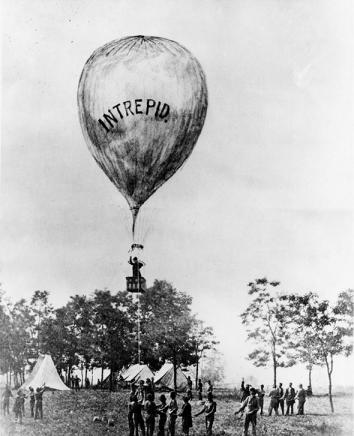  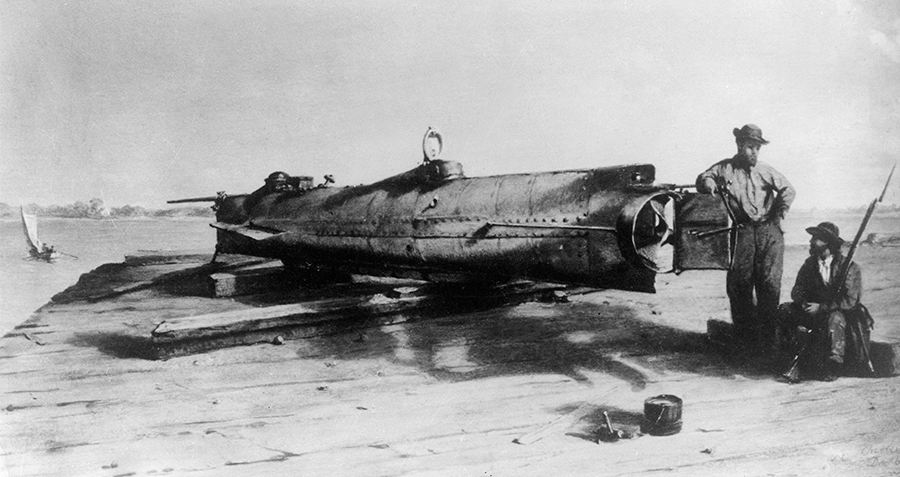 Edit: Also, let's not forget these guys:  The Zouaves weren't just guys in funny uniforms; before the Elmer Ellsworth toured the states with a drill team that put on shows of "Zouave Drill." This involved some innovative light infantry tactics like fighting in open order, moving at a run instead of a slow march, and shooting from prone positions. While no, not every infantry unit did this and the Zouaves soon disappeared, they DID influence a lot of the tactics used by the infantry later on. Cessna fucked around with this message at 04:27 on Sep 28, 2018 |
|
|
|
Idgi, is this Concept Art for Bioshock Infinite?
|
|
|
|
Cessna posted:
Didn't Zouaves train to reload while prone/supine as well?
|
|
|
|
Jobbo_Fett posted:I also would've started WW2 if I was this bad an artist. You know, I agree this style looks kind of weird at first. However this kind of style is really interesting in terms of art history, because it appears at a really interesting moment at which traditional Chinese court painting traditions began to fuze with then modern European techniques. The results follow the Chinese style of ink on silk scrolls with flat tonal variation, but incorporate European innovations in perspective and and heretofore unseen attention to anatomical detail. This fusion is best illustrated through the work of Giuseppe Castiglione, a Jesuit missionary to China and court painter during the reign of the Yongzheng Emperor. You can admire some of his work done in tradition European style here: unfortunately I couldn't find a linkable image file. You can see he was a master of the European tradition, however most of his production in China adheres more closely to conservative tastes:  Qianlong Emperor hunting However in his portraits of the emperor's household you can really see the fusion of styles to its best effect. Although he maintains the suble, almost washed out tones of traditional Chinese portraiture, look at how he works the subtle shading into the shadow of his subjects legs, the careful attention to lighting previously unseen in Chinese art.  Following this European influence you also start seeing Chinese art begin to incorporate one and two point perspective. However you can tell the Chinese consumer hadn't entirely lost their taste for linear perspective, as a lot of work continues to use those styles. In his famous paining A Hundred Steeds Castiglione employs combines these techniques to create what I think is a pretty stunning achievement that incorporates the best of east and west. https://upload.wikimedia.org/wikipedia/commons/8/8c/A_Hundred_Steeds.jpg (linked because gigantic)
|
|
|
|
I am pretty sure while some of it did resemble Napoleonic style close line infantry that some of the formations and drill were a bit more developed alongside with skirmishing during the ACW. Also I'd consider those late war weapons sort of advanced too.
|
|
|
|
|
Squalid posted:You know, I agree this style looks kind of weird at first. However this kind of style is really interesting in terms of art history, because it appears at a really interesting moment at which traditional Chinese court painting traditions began to fuze with then modern European techniques. The results follow the Chinese style of ink on silk scrolls with flat tonal variation, but incorporate European innovations in perspective and and heretofore unseen attention to anatomical detail. this is very cool
|
|
|
|
OctaviusBeaver posted:The US Civil War had a lot of cool amphibious stuff going on with river boats in the western theater with the boats and infantry supporting each other closely. Grant used them to blitz past Vicksburg and come at it from behind. That stuff was probably pretty new and innovative. At the same point in time you see that riverine gunboat style a lot in the ongoing colonization of Africa. Lots of disassembling steamers and putting them back together.
|
|
|
|
Also quite a few elements of that technology showed up late Crimean War.
|
|
|
|
|
ilmucche posted:Could you elaborate on that? What exactly were civil war tactics? I've figured it was rank and file shooting until they realised that artillery and trenches would destroy units trying to do that. Like the core concept was that you had a line of some sorts. I've occasionally played against someone who doesn't know how this works and it turns into a shitfest where brigades are running all over the place, occasionally getting ganged up on by two or more enemy brigades and getting shot to pieces. Like a barfight, but on an operational scale.
|
|
|
|
Incidentally, one thing that gave me fits when I tried playing the Ultimate General games -- in the Napoleonic wars, field guns firing canister had very little trouble outranging and disassembling infantry unit that tried to come at them head-on. Certainly the same thing on a smaller scale appears to have happened at various points during the historical ACW, like at Malvern Hill during the Seven Days' Battle. Every time I try this in Ultimate General games my batteries get shot to hell by infantry firing from outside their effective range. I'm aware that Civil War rifle muskets had a substantially longer range than their Napoleonic counterparts, but the numbers I see are on the order of maybe 300 yards, which even Napoleon's field guns would have been able to easily beat, even firing canister. Is this a game mechanic sort of thing, or am I missing something here?
|
|
|
|
Isn't there a civil war story where a guy ordered canister fired at a group running at his battery and when he sent his men to check on the wounded they found no casualties, no wounded, just nothing?
|
|
|
|
SeanBeansShako posted:WW2 related, what was the fate of the Red Army soldiers cut off during the Nazi invasion who fought or worked with partisan bands? did they get a hero's welcome/pass or the usual Stalinist cruelty after the war? or did both happen because life can be cruel? Both. In Merridale's Ivan's War you have some Red Army soldiers fighting their way back to their own sides after months and years of having partisan adventures and have them re-integrate no problem. But then you get weird poo poo like some militias being integrated into the Red Army, but because of a record-keeping gently caress up, they are branded as cowards and traitors after their division gets massacred by the Germans.
|
|
|
|
P-Mack posted:this is very cool that horses painting is so goddamn calming
|
|
|
|
Reiterpallasch posted:Incidentally, one thing that gave me fits when I tried playing the Ultimate General games -- in the Napoleonic wars, field guns firing canister had very little trouble outranging and disassembling infantry unit that tried to come at them head-on. Certainly the same thing on a smaller scale appears to have happened at various points during the historical ACW, like at Malvern Hill during the Seven Days' Battle. You aren't massing enough batteries, I'm serious. Also leave your artillery behind your line
|
|
|
|
When positioning my cannons to use canister shot I always somehow forget that this puts them in rifle range, and that there are way fewer guys in an artillery battery than there are in a line infantry regiment.
|
|
|
|
Cessna posted:This involved some innovative light infantry tactics like fighting in open order I mean, this is just Napoleonic skirmishers, no? Also I'm not sure it's possible to claim zouaves as an ACW innovation when they were a literal copy of something France invented 30 years earlier. As for ACW tactics being just Napoleon with bells on - I don't think forming square was still much of a thing, right? The point had basically been reached where cavalry couldn't charge home against infantry in line, which is a fairly fundamental part of the rock-paper-scissors of Napoleonic tactics.
|
|
|
|
Cessna posted:
I don't think that some of these are all that valid: I don't think that trench systems were necessarily all that different from Napoleonic siege works. The scale was a bit larger (due to the scale of armies engaged) but I'm not seeing anything in those trenches that Menno van Coehoorn would not recognize and understand. Zouaves do not do anything different from a British Napoleonic rifle battalion or a Voltigeur battalion. I will give you balloons and ironclads, but I'm not fully convinced that either of those are tactical changes, more like technological innovations that led to people doing exactly the same poo poo, only more of it. The ACW was all about better performance within the same concepts. Now your counterbattery fire is a lot more accurate, for example, but people were doing counterbattery fire all the time in the Napoleonic wars with somewhat less success. If you take a French line infantry battalion from the Napoleonic wars and shove them in to one of the armies at Shiloh, they perform fine (other than from an equipment perspective, but you could train them to use a rifled musket in like, a few hours).
|
|
|
|
feedmegin posted:I mean, this is just Napoleonic skirmishers, no? Also I'm not sure it's possible to claim zouaves as an ACW innovation when they were a literal copy of something France invented 30 years earlier. Keep in mind that by 1864, veteran units were fighting in open order all the time. The Napoleonic marching drills were not always a thing. Sure, you could call it just a copy of skirmishing or whatever but there absolutely was tactical innovation during the ACW. There are examples of units forming square during the war, but cavalry didn't do the same thing in the ACW as it did in the Napoleonic Wars and worked very differently. In particular, the artillery was so powerful that the prospect of using cavalry against sited in guns was suicidal. Cavalry was still a powerful arm because ACW-era carbines were much, much better than those Napoleon's cavalry used, but it wasn't the same thing.
|
|
|
|
Panzeh posted:Keep in mind that by 1864, veteran units were fighting in open order all the time. Sure. We were talking about zouaves specifically though, and they were gone by then.
|
|
|
|
gabions are an early modern thing and so are extensive trench works, don't make me post vaubantrenchdiagram dot jpg
|
|
|
|
Panzeh posted:Keep in mind that by 1864, veteran units were fighting in open order all the time. The Napoleonic marching drills were not always a thing. Sure, you could call it just a copy of skirmishing or whatever but there absolutely was tactical innovation during the ACW. Interesting, I didn't know there was such a shift. Do you have more information on it? I'm curious how different it was from the French pushing forward like a quarter of a corps as open order skirmishers. Was the concentration of force based on open order troops and fire-and-movement rather than mass?
|
|
|
|
KYOON GRIFFEY JR posted:Interesting, I didn't know there was such a shift. Do you have more information on it? I'm curious how different it was from the French pushing forward like a quarter of a corps as open order skirmishers. Was the concentration of force based on open order troops and fire-and-movement rather than mass? You see it a lot in the 1864 Valley campaign, but Confederate units started fighting in a thickened skirmish line to be able to take the terrain better and reduce casualties- this probably didn't register too much to observers, but it was a definite shift. This kind of thing didn't completely stick, and in the more prominent battles, the need for mass and huge concentrations made that less viable, but they were learning. A good example of this is Getty's Brigade at the battle of Summit Point, where three regiments took on a mile's frontage. Still, even the US army didn't completely trust this for the next fifty years, but there was definitely innovation- it was hardly Napoleon writ large with rifled muskets.
|
|
|
|
Always an interesting debate about what is new and what is not and the point at which something is truly new. The more I learn the more I go for a gradual evolution of tactics in a semi-linear fashion rather than the various revolutions in military affairs. The French at Jena used open order to pin the Prussian flank but it was not the main effort.
|
|
|
|

|
| # ? May 27, 2024 17:00 |
|
KYOON GRIFFEY JR posted:Always an interesting debate about what is new and what is not and the point at which something is truly new. The more I learn the more I go for a gradual evolution of tactics in a semi-linear fashion rather than the various revolutions in military affairs.  if i ever get funding/a job, my book manuscript and my idea for my next project are both about how early 17th century warfare was more archaic than most people think
|
|
|







